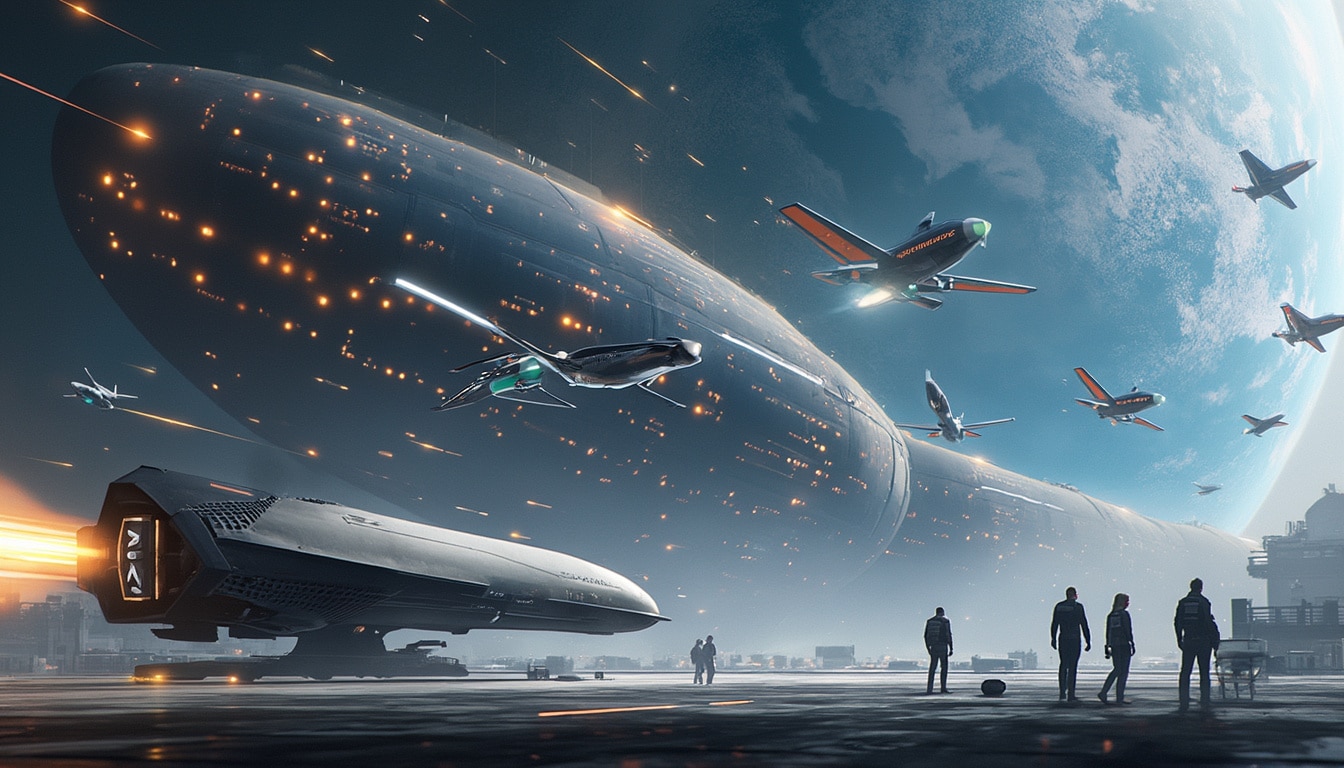The emergence of SpaceX in the realm of space exploration has not only revolutionized how we access the cosmos but is also significantly influencing the development of military technologies. Recently, discussions have intensified regarding SpaceX’s role in establishing the U.S. ‘Golden Dome’ missile defense system. This initiative aims to create an advanced protective shield against potential threats, blending military needs with cutting-edge aerospace engineering. As the landscape of defense systems evolves, the collaboration between private aerospace firms and government agencies such as NASA and the U.S. military is becoming more critical than ever.
The Golden Dome project draws attention to the increasing need for robust missile defense strategies. With competitors like Northrop Grumman and Lockheed Martin also in the mix, the race is on to create a system capable of intercepting various types of threats at unprecedented altitudes. This ambitious undertaking not only highlights technological advancements but showcases the importance of international collaboration and market competition in driving innovation. Venture into the heart of space defense systems, exploring how corporate entities such as SpaceX, along with traditional defense contractors like Raytheon and Boeing, collaborate to address emerging challenges in aerospace and defense.
The Vision Behind the Golden Dome Initiative
The vision for the Golden Dome initiative emerges from a combination of technological necessity and geopolitical dynamics. The need for superior missile defense has never been more pronounced, with advancements in missile technology and threats becoming more sophisticated. The goal is to shield critical infrastructure and populations from potential attacks, particularly from rogue states or terrorist organizations. SpaceX’s involvement signifies a shift in defense paradigms, where innovative approaches fuel these substantial protective measures.

Strategic Importance of Missile Defense Systems
Missile defense systems are pivotal to national security. As geopolitical tensions escalate, the demand for reliable systems capable of intercepting advanced missile threats increases. The Golden Dome initiative, positioned as a protective shield, aims to fortify the U.S. against potential aerial assaults. Such systems deliver not only physical security but also a psychological sense of safety for citizens. Technological advancements in hypersonic missiles challenge traditional defense algorithms, necessitating a more dynamic approach that SpaceX and its competitors are keen to develop.
This project embodies a broader strategy that focuses on integrating modern technologies such as artificial intelligence, machine learning, and advanced radar systems to improve accuracy and reaction times. Moreover, the collaboration between SpaceX and other contractors like General Dynamics and Reliance Defense demonstrates a united front in ensuring that the U.S. maintains its edge over any potential adversaries. Such partnerships also underline a shift in defense contracting, where private companies now play a crucial role in securing national interests.
Innovative Approaches to Missile Defense
In its quest to establish the Golden Dome system, SpaceX is set to leverage its expertise in rocket technology and aerospace engineering. The company has continually pursued innovations that challenge traditional frameworks, making it an ideal candidate for this pioneering project. The integration of reusable rocket technology, honed in SpaceX’s previous missions, could yield significant advancements in interception technologies.
The role of partnerships cannot be underestimated. Collaborations with established defense contractors like Raytheon and Northrop Grumman will allow SpaceX to tap into existing frameworks and expansive knowledge bases within these organizations. This synergy is anticipated to enhance developmental timelines and reinforce operational capabilities, ultimately resulting in a more sophisticated and versatile defense mechanism.
Challenges and Opportunities in Development
The journey towards realizing the Golden Dome initiative is punctuated with challenges and opportunities. SpaceX must navigate technical hurdles, regulatory scrutiny, and budget constraints while ensuring that the system meets military specifications and operational readiness timelines. These challenges are compounded by the need to compete with established military contractors while setting competitive pricing strategies to gain government contracts effectively.

Technological Hurdles
Developing a reliable missile defense system involves addressing numerous technological hurdles. From enhanced targeting algorithms to advanced interception mechanisms, every facet of technology demands exacting standards. The ability to track and intercept fast-moving aerial threats requires precision engineering and rapid response capabilities. Such requirements will necessitate extensive research and testing phases.
Moreover, hypersonic technology presents a unique challenge, as these weapons can travel at speeds exceeding Mach 5, severely complicating interception efforts. SpaceX’s engineering may encounter limitations in speed and efficacy, demanding innovative solutions and breakthroughs in propulsion and guidance systems.
Collaboration with Government Agencies
Collaboration with government entities, including NASA and various branches of the U.S. military, will prove essential in overcoming many identified challenges. Partnerships can facilitate access to resources and expertise that private companies may lack. Additionally, gaining insights into operational requirements and future threats can guide design specifications to align with real-world applications.
As demonstrated by the coordination among leading aerospace corporations, well-structured alliances can yield significant advancements. Working together will hasten development timelines while enriching each partner’s expertise. This collaboration has the potential to create a system that far surpasses existing technologies in terms of efficacy and reliability.
Future Perspectives and Implications of SpaceX in Defense
The increasing role of private companies like SpaceX in defense is indicative of a larger trend towards privatization of military technologies. As traditional defense contractors face pressure to innovate, new entrants bring fresh perspectives and accelerated timelines to complex projects, such as the Golden Dome initiative. This evolving landscape reveals profound implications for national security strategy and defense policy moving forward.

Impact on Defense Spending
SpaceX’s entry into defense sectors may disrupt traditional defense contractor pricing structures, fostering competitive environments where innovation thrives. Government contracts may draw on a broader base of contractors, including emerging startups with novel approaches. This shift could lead to more efficient use of defense spending and enable the military to acquire cutting-edge technologies at reduced costs.
A New Era for Aerospace and Defense
The convergence of aerospace and defense is moving towards an interconnected system where advancements in space technology will inevitably influence military capabilities. Enhanced surveillance, communication, and rapid deployment capabilities provided by SpaceX and its partners could redefine operational strategies. The integration of space assets into military architectures signifies the dawn of multi-domain operations, enhancing combined forces’ effectiveness in addressing modern threats.
With an eye toward ensuring the nation’s safety, the development of the Golden Dome initiative represents a critical step in facilitating robust defense mechanisms. Aligning with ongoing technological transformations will keep the U.S. military adaptable and responsive in the face of emergent challenges—an essential characteristic in an unpredictable global landscape.
| Company Name | Primary Focus | Recent Projects |
|---|---|---|
| SpaceX | Aerospace and Defense | Golden Dome Initiative |
| Northrop Grumman | Defense Technology | Integrated Air Defense Systems |
| Lockheed Martin | Aerospace and Defense | Missile Defense Systems |
| Raytheon | Missile Defense and Actuation | Patriot Missile System |
| Boeing | Aerospace and Defense | Ground-based Midcourse Defense |
| Blue Origin | Aerospace | Suborbital and Orbital Flight Systems |
The Golden Dome initiative is poised to redefine how the U.S. approaches national defense. By embracing innovations in aerospace technology and fostering collaborations among essential military and civilian contractors, the road ahead features progressive transformations designed to bolster security through unprecedented efficiency and technology.




Leave a Reply